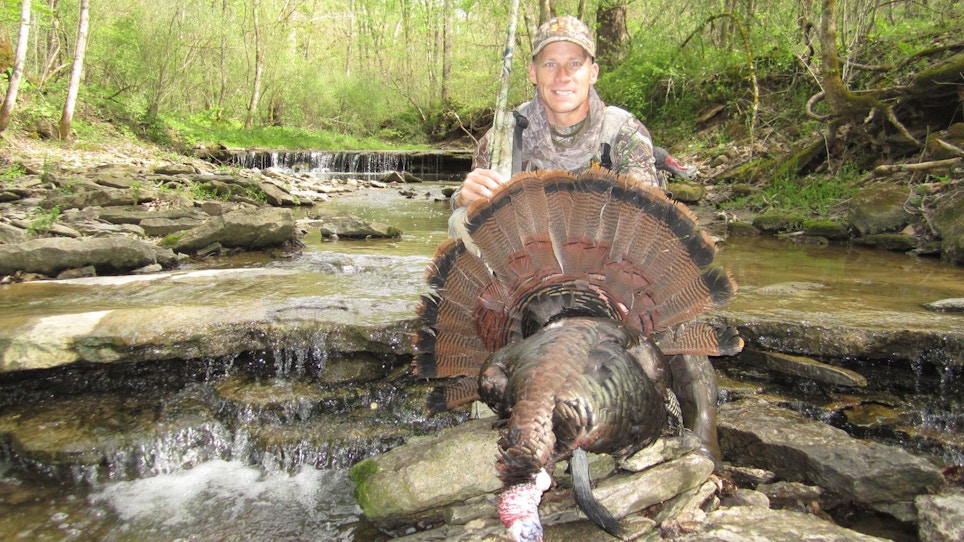At some point in your turkey hunting career, you’ll long for strange landscapes and exotic gobblers. Like many, you’ll seek a grand slam — an Eastern, Merriam’s, Osceola and Rio Grande turkey.
That can seem like a daunting task, involving lots of planning, travel and money. So we asked Jeff Budz, the all-time grand slam master, for tips to make the quest easier. Budz has taken the most registered grand slams — 87 — and a gobbler super slam, consisting of a longbeard in each of the 49 states with a turkey season. Here’s his outline for slam success.
Pinpointing the Spot
Let’s assume you have taken a few Easterns and are seeking a Rio, Merriam’s and Osceola. You don’t have many geographical options with the latter, as Osceola only inhabits central and southern Florida. However, the range of Merriam’s and Rio Grande’s cuts through several states, and deciding on a destination can be tough. Budz recommends Kansas for Rios and Nebraska or South Dakota for Merriams.
“I always encourage people to do a Kansas Rio/Nebraska Merriams one-week hunt,” he said. “There are several places to hunt in each state, with your choice of guides, public ground and knock-on-door properties all readily available. Specifically, hunt in the northwestern part of each state in mid-May.”
Budz said the Osceola will typically represent the most difficult leg of a slam. He suggested trying public walk-in property, applying for a special draw hunt or contacting a guide. (He offers Florida hunts at www.tagitworldwide.com.)
If you’re still seeking an Eastern, Budz said Missouri remains a top option. It offers over-the-counter tags, doesn’t receive too much pressure and has plenty of public land. He cautioned hunters to avoid the Southeast, as the hard-hunted Easterns in those states can be tough.
 Fine-Tuning Hunting
Fine-Tuning Hunting
After you’ve identified a destination, look for quality hunting spots and try to time your trip appropriately. Budz puts in loads of research before committing to an area.
“If I can hunt big tracts of public ground, I go to the farthest ground from the road,” he said. ”There still are places left where you can get over a mile from any road. River bottoms are always nice. I talk to as many locals as possible before investing much time there. I’ll call the state biologist, local game wardens and feed stores. UPS, USPS and Fed Ex drivers are always great resources as well.”
Many folks go with outfitters, which is fine. However, Budz said you still need to conduct careful research.
“I wouldn’t go with anyone unless I spoke to a few credible references,” he said. “But remember, if it’s too good to be true, it’s not true. Example: If you call an outfitter a few weeks before the opener and he still has spots, hang up. I guide Osceolas and usually book up the year before. Prices are around $750 for an Eastern, Rio or Merriam’s, with the Osceola costing about $1,750-ish.”
Timing your trip can present another dilemma. Many hunters prefer the early season, before gobblers have faced much hunting pressure. Budz takes the opposite approach.
“I’ll hunt the Florida opener with clients and then three weeks in for my two toms,” he said. “When it comes to the rest of the country, I hunt as late as possible. Most hunters are worried more about fishing, the weather is usually better and most of the hens are nesting, leaving the toms vulnerable.”
Many folks wonder about adapting their tactics when hunting strange country or subspecies. Budz said he encourages hunters to use a consistent approach.
“I just go hunt,” he said. “Which is to cover a lot of ground from well before sunrise to well after sunset. I stay out all day, especially if the weather is bad. So many hunters go to get away. I go to hunt — not to eat, party, socialize or sleep. If I see a tom in a certain area once, he’d better watch out. If I see him there twice within a few days, get the scale and tape measure out.”
Above All
Despite his hard-nosed approach to hunting, Budz encourages people to remember the real joys of pursuing a grand slam.
“Take lots of pictures, keep notes, don’t plan on much sleep and don’t be afraid to knock on a door, stop a farmer or strike up a conversation with someone who has a different accent,” he said. “The biggest bonus is the friends you have an opportunity to acquire. I have very good friends in far more states than not. I don’t get to see them much, but I definitely stay in touch.”
You might not take 87 grand slams, but remember, even Budz started with one. Form a well-researched plan, hunt hard and enjoy the journey. Before long, you might have a journal full of grand slam memories.






